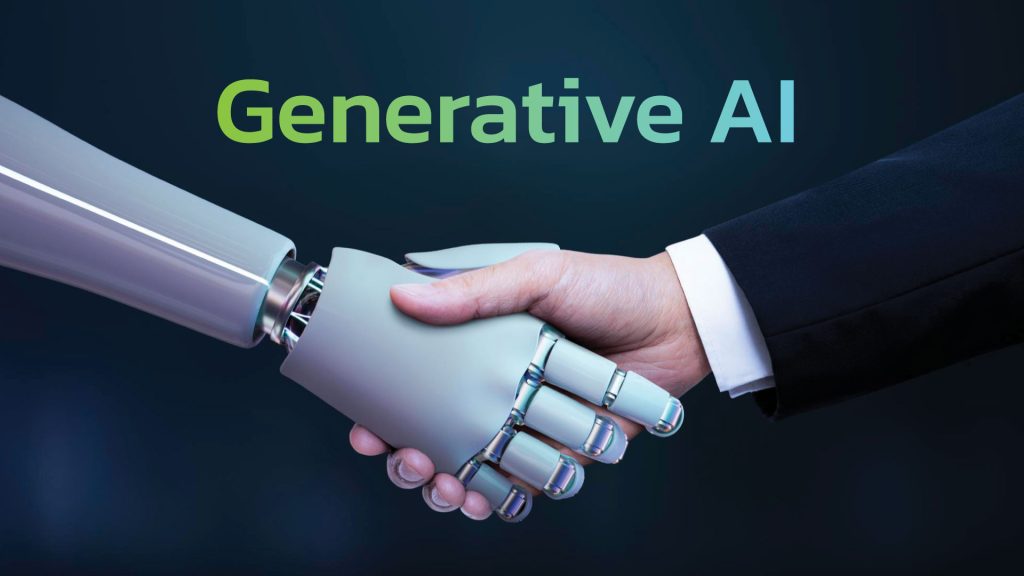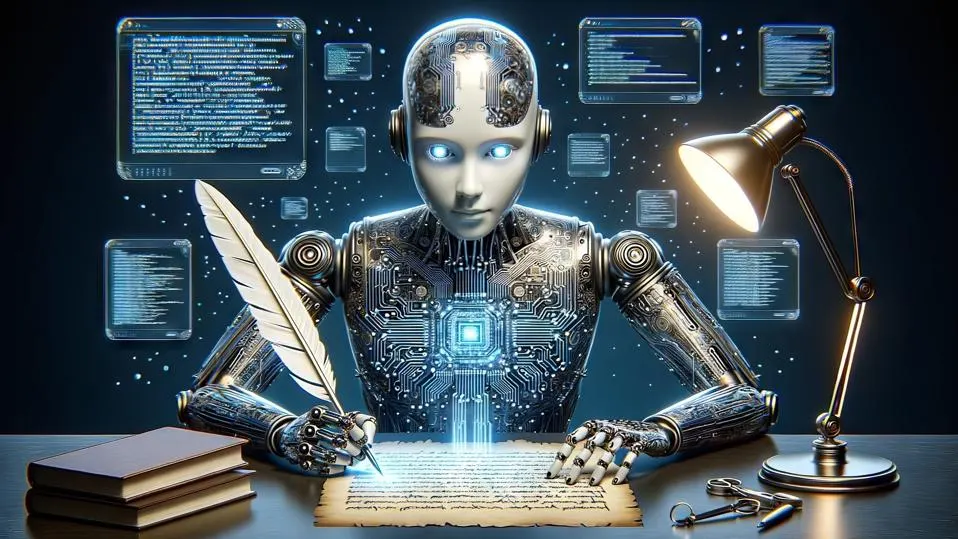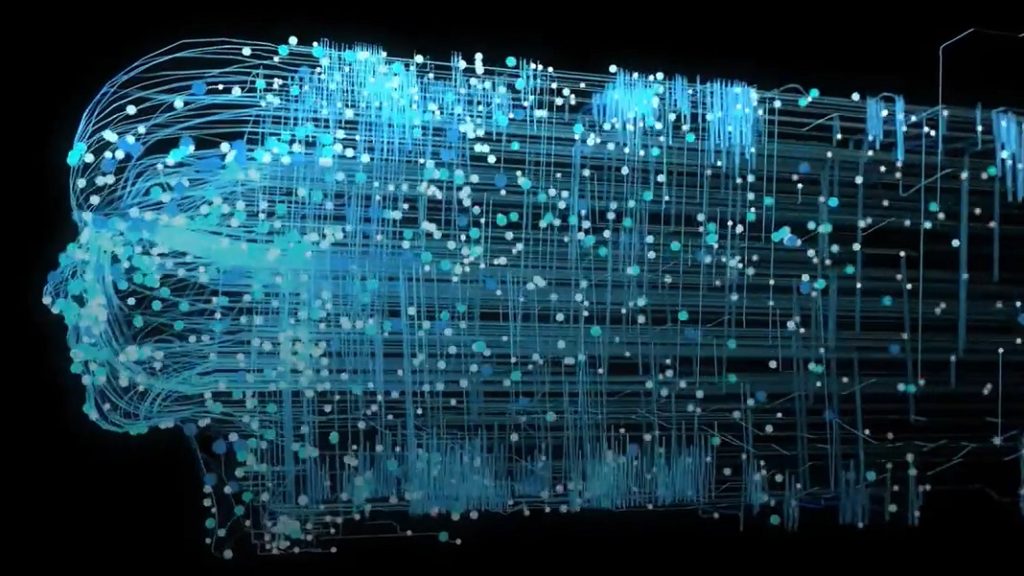Generative AI is revolutionizing how we create and interact with technology, pushing the boundaries of what machines can do and how they can assist human creativity. By using algorithms and models to generate new content—ranging from text and images to music and design—Generative AI is reshaping industries and opening up new possibilities for innovation. This article explores the fundamentals of Generative AI, its applications, benefits, challenges, and the future directions of this transformative technology.

Understanding Generative AI
- What is Generative AI?
- Definition and Core Concepts: Generative AI refers to a category of artificial intelligence that can generate new data or content based on input it has learned from existing data. Unlike traditional AI, which focuses on recognizing patterns and making predictions, Generative AI creates novel outputs, often resembling human creativity.
- Key Technologies: The technology behind Generative AI includes various algorithms and models, such as Generative Adversarial Networks (GANs), Variational Autoencoders (VAEs), and Transformer models. These technologies enable AI systems to generate new content that mimics real-world data.
- How Generative AI Works:
- Training Data: Generative AI models are trained on large datasets containing examples of the content they are expected to generate. For instance, a model trained on a dataset of paintings can generate new artworks by learning the styles and techniques used in the dataset.
- Algorithmic Processes: The training process involves algorithms that learn to create data by adjusting parameters based on feedback. For GANs, this involves a generator that creates content and a discriminator that evaluates it, resulting in increasingly realistic outputs over time.
Applications of Generative AI
- Creative Arts and Entertainment:
- Art and Design: Generative AI is making significant strides in the creative arts, where it can produce original artworks, graphic designs, and illustrations. Artists and designers use AI tools to explore new styles, generate novel concepts, and enhance their creative processes.
- Music and Sound: In music, Generative AI can compose original pieces, create soundscapes, and even mimic the styles of famous composers. AI-driven music tools offer new ways to experiment with compositions and generate unique soundtracks.
- Content Creation and Media:
- Text Generation: AI models like GPT-4 (Generative Pre-trained Transformer 4) can generate coherent and contextually relevant text, making them valuable for writing assistance, content creation, and even automated journalism. These models can draft articles, create marketing copy, and generate creative writing pieces.
- Video and Animation: Generative AI can also be used to create video content and animations. It can generate realistic video scenes, create special effects, and assist in animation by generating frames or sequences based on given inputs.
- Design and Prototyping:
- Product Design: In product design, Generative AI can assist in creating innovative product concepts and prototypes. By generating design options based on user inputs and requirements, AI can accelerate the design process and explore a wider range of possibilities.
- Architecture: Generative AI helps architects and urban planners by producing novel architectural designs and optimizing building layouts. AI can generate blueprints and visualize structures in innovative ways, enhancing architectural creativity.
- Healthcare and Biotechnology:
- Drug Discovery: Generative AI is used in drug discovery to create new molecular structures and predict their potential efficacy. By analyzing existing drug data, AI can generate new compounds and assist in the development of novel pharmaceuticals.
- Medical Imaging: AI models can generate synthetic medical images for training purposes, helping to improve diagnostic accuracy and enhance the performance of medical imaging systems.

Benefits of Generative AI
- Enhanced Creativity and Innovation:
- Creative Exploration: Generative AI provides tools for artists, designers, and writers to explore new creative avenues and generate ideas that may not have been conceived otherwise. It acts as a collaborator, expanding the boundaries of human creativity.
- Efficiency and Productivity: AI can streamline content creation processes, reducing the time and effort required to produce high-quality outputs. This efficiency benefits industries such as media, design, and entertainment.
- Personalization and Customization:
- Tailored Experiences: Generative AI can create personalized content based on individual preferences and behaviors. This capability enhances user experiences by providing customized recommendations, products, and services.
- Adaptive Design: AI can generate adaptive designs that respond to user feedback and changing requirements, ensuring that products and services remain relevant and effective.
Challenges and Considerations
- Ethical and Legal Issues:
- Authenticity and Ownership: Generative AI raises questions about the authenticity of created content and intellectual property rights. Determining who owns the rights to AI-generated works and how to attribute authorship are important ethical considerations.
- Misuse and Deepfakes: The ability to generate realistic content also poses risks, such as the creation of deepfakes and misleading information. Addressing the potential for misuse and developing safeguards to prevent harmful applications are critical challenges.
- Quality and Reliability:
- Content Quality: While Generative AI can produce impressive outputs, the quality of generated content may vary. Ensuring that AI-generated content meets high standards and aligns with user expectations is an ongoing challenge.
- Bias and Fairness: AI models can inherit biases present in their training data, leading to biased or unfair outputs. Addressing these biases and ensuring fairness in AI-generated content is essential for maintaining trust and credibility.
Future Directions for Generative AI
- Advancements in Models and Algorithms:
- Improved Algorithms: Future developments in Generative AI will likely involve more advanced algorithms that enhance the quality and diversity of generated content. Research into new architectures and training techniques will continue to push the boundaries of what AI can create.
- Interdisciplinary Integration: Integrating Generative AI with other fields, such as neuroscience and cognitive science, may lead to more sophisticated and human-like creative processes. Collaborative research will explore new ways to harness AI’s potential.
- Ethical and Responsible Development:
- Ethical Guidelines: Developing ethical guidelines and best practices for Generative AI will be crucial for addressing ethical concerns and ensuring responsible use. Collaboration between researchers, policymakers, and industry stakeholders will help shape these guidelines.
- Transparency and Accountability: Increasing transparency in AI processes and establishing accountability mechanisms will foster trust and ensure that Generative AI is used ethically and responsibly.

Conclusion
Generative AI is a transformative technology that is redefining creativity and innovation across various domains. By generating new and original content, AI is expanding the possibilities for artists, designers, and creators, while also offering practical applications in fields like healthcare and biotechnology. However, the rise of Generative AI also brings challenges related to ethics, quality, and bias. As the technology continues to evolve, addressing these challenges and harnessing the potential of Generative AI will be key to shaping a future where AI complements and enhances human creativity and innovation.


